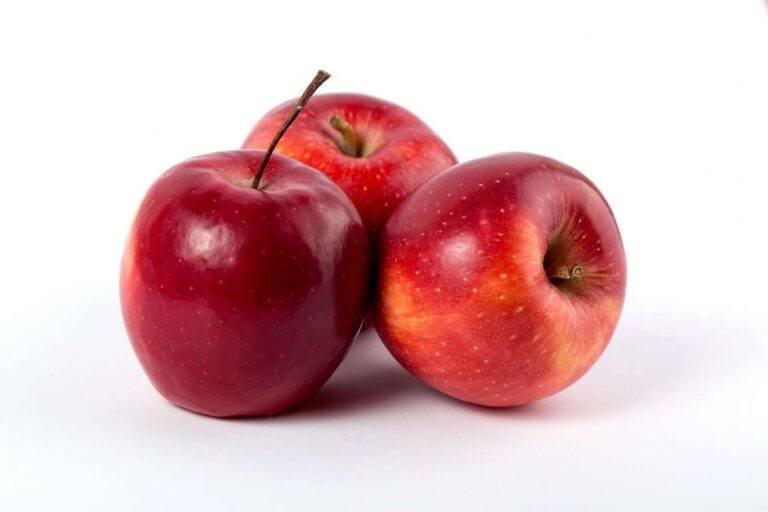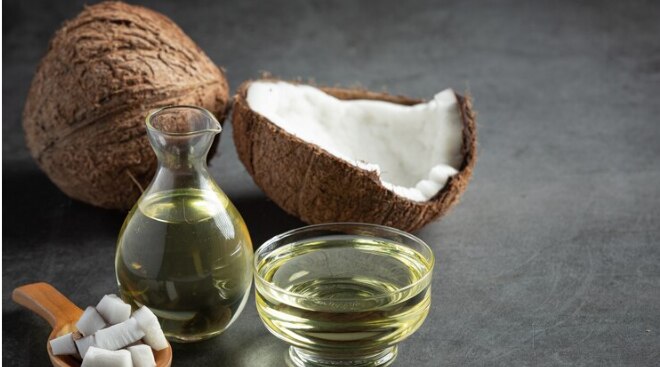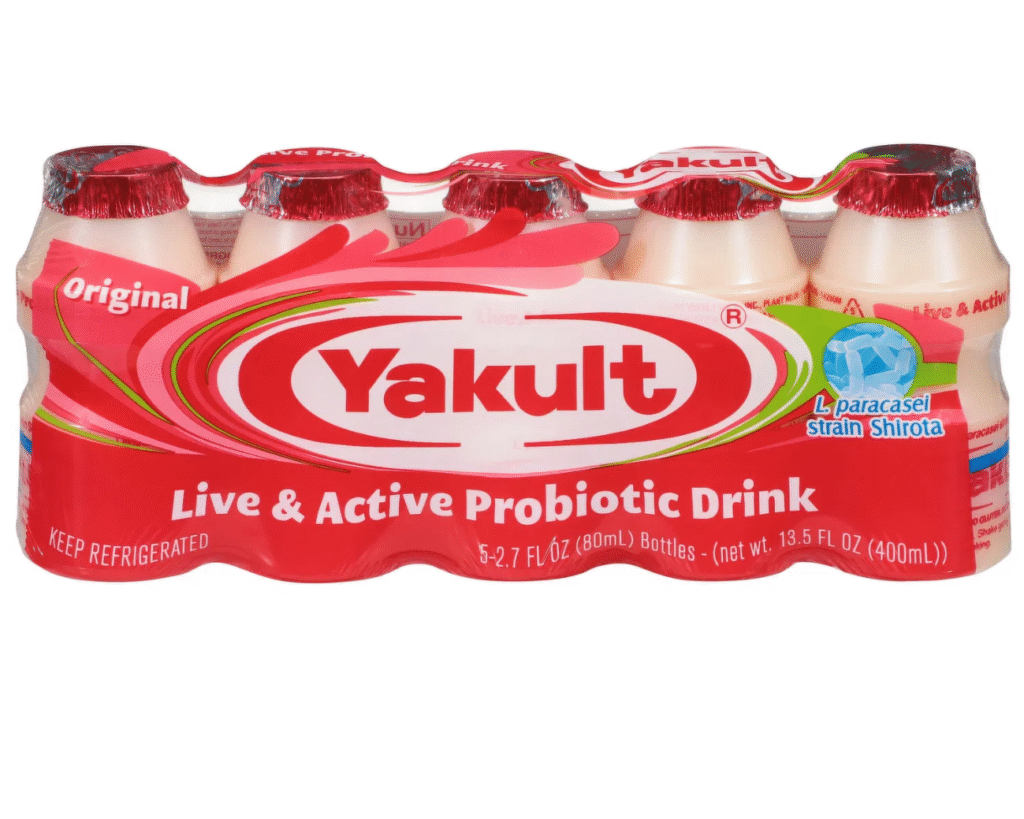Greek yogurt has become a staple in many households, especially among those seeking healthier dietary options. Known for its thick, creamy texture and tangy flavor, it’s a popular dairy choice that offers a variety of health benefits. Recently, Greek yogurt for weight loss has gained significant attention, with many nutritionists and fitness enthusiasts recommending it as a versatile, nutrient-dense food for those looking to shed a few pounds. Packed with high-quality protein, probiotics, and essential nutrients, Greek yogurt can be a satisfying and nutritious addition to any weight-loss diet.
The combination of protein and probiotics in Greek yogurt not only supports muscle growth and recovery but also contributes to better digestion and gut health—two key factors that play a role in effective weight management. As more people become aware of its benefits, Greek yogurt has found its way into smoothies, parfaits, and even savory dishes, making it an easy addition to a balanced, calorie-conscious diet.
In the following sections, we’ll explore how Greek yogurt can help you achieve your weight-loss goals, what makes it different from regular yogurt, and why it’s considered one of the best foods for anyone looking to lose weight in a healthy, sustainable way.
Nutritional Profile of Greek Yogurt
Greek yogurt is a nutrient powerhouse, making it a top choice for those seeking to improve their health and achieve weight loss goals. One of its standout features is its high protein content, which plays a crucial role in weight management. A single serving of Greek yogurt (typically 6 ounces) can provide up to 15 grams of protein, more than double that of regular yogurt. Protein helps promote satiety by reducing hunger and controlling appetite, making Greek yogurt a great addition to any weight loss diet.
In addition to its protein benefits, Greek yogurt is available in low-sugar options, making it an ideal choice for those looking to reduce their sugar intake. Unlike many flavored yogurts, which can be loaded with added sugars, plain Greek yogurt contains minimal sugar, allowing you to enjoy its natural, tangy flavor without compromising your diet.
Greek yogurt also contains probiotics, which are beneficial bacteria that support gut health. These probiotics can improve digestion, boost the immune system, and help maintain a healthy balance of gut flora, all of which contribute to overall well-being. Healthy digestion is particularly important for weight loss, as it enhances nutrient absorption and supports regular metabolism.
When compared to regular yogurt, Greek yogurt is significantly thicker, creamier, and higher in protein, making it more filling and satisfying. Additionally, Greek yogurt typically has a lower sugar content than regular yogurt, making it a better option for those trying to reduce their calorie intake. In comparison to other dairy products like milk and cheese, Greek yogurt is a lighter, low-calorie option that still provides essential nutrients like calcium and vitamin D.
For anyone looking to optimize their weight loss diet, Greek yogurt is a nutritious, versatile food with numerous benefits.
How Greek Yogurt Supports Weight Loss
Greek yogurt has rapidly gained popularity as a staple in weight-loss diets, thanks to its unique nutritional profile and its ability to contribute to a healthy, balanced diet. Here’s how Greek yogurt for weight loss can help you reach your goals:
High in Protein
One of the most significant benefits of Greek yogurt is its high protein content, which plays a central role in weight management. A typical 6-ounce serving of Greek yogurt can contain up to 15 grams of protein, significantly higher than regular yogurt, which usually offers only around 5 grams per serving. Protein is an essential macronutrient that not only supports muscle growth and repair but also contributes to satiety—helping you feel full for longer.
Protein helps control appetite by triggering the release of hormones such as ghrelin, the hunger hormone, while suppressing leptin, the hormone that signals satiety. This means that Greek yogurt can help curb your hunger and reduce cravings, which are often the biggest challenges when trying to maintain a calorie deficit for weight loss. By providing a filling snack or meal component, Greek yogurt makes it easier to resist overeating and stay on track with your weight-loss goals.
Moreover, the protein in Greek yogurt supports muscle retention during weight loss. When you’re in a calorie deficit, your body can break down muscle tissue for energy, but adequate protein intake helps preserve lean muscle mass, which in turn supports your metabolism. A higher muscle mass means your body burns more calories at rest, further aiding weight loss.
Low in Calories
Despite being nutrient-dense, Greek yogurt is surprisingly low in calories, making it an excellent choice for weight loss. A typical serving of plain, non-fat Greek yogurt contains around 100–120 calories, depending on the brand and fat content. This allows you to enjoy a satisfying portion without consuming excess calories.
When compared to other snack options, Greek yogurt is a more calorie-conscious choice. Many packaged snacks, granola bars, or even flavored yogurts can contain 200–300 calories or more per serving, often without providing the same level of nutritional value. Greek yogurt, on the other hand, offers a low-calorie food that is rich in essential nutrients, including protein, calcium, and probiotics, without the added sugars or empty calories commonly found in processed snacks.
Furthermore, the low-calorie nature of Greek yogurt allows it to fit easily into a variety of weight-loss meal plans. You can enjoy it as part of breakfast, lunch, or dinner, or as a healthy snack, knowing that it won’t contribute significantly to your daily calorie intake.
Probiotics for Gut Health
Another important benefit of Greek yogurt is its probiotic content, which plays a significant role in maintaining gut health. Probiotics are beneficial bacteria that support the digestive system and help maintain a balanced gut microbiome. This balance is crucial for overall well-being and can have a direct impact on weight management.
Research has shown that gut health is linked to weight regulation, with an imbalanced gut microbiome potentially leading to issues such as bloating, indigestion, and even weight gain. Probiotics found in Greek yogurt help to replenish beneficial bacteria in the gut, promoting a healthy digestive system. A healthy gut can improve the absorption of nutrients, reduce inflammation, and support regular metabolism—factors that are important for efficient weight loss.
In addition to improving digestion, the probiotics in Greek yogurt may also aid in controlling appetite. Some studies suggest that certain strains of probiotics can influence the release of appetite-regulating hormones, further enhancing feelings of fullness. A healthy gut microbiome can help regulate blood sugar levels and reduce insulin resistance, both of which are important for preventing fat storage.
By improving digestion and metabolic health, Greek yogurt supports overall well-being, making it an excellent addition to a weight-loss diet that focuses on long-term health.
Versatility as a Healthy Snack or Meal Add-On
One of the reasons Greek yogurt is so popular in weight-loss diets is its versatility. It can be easily incorporated into a wide range of meals and snacks, making it a convenient and enjoyable part of a healthy eating plan.
Smoothies: Greek yogurt is a perfect base for weight-loss smoothies. Blend it with fruits, vegetables, and a handful of seeds or nuts for a satisfying, protein-packed snack or meal replacement.
Parfaits: Layer Greek yogurt with fresh berries, nuts, and a small amount of honey for a delicious and nutritious parfait. This is a great way to enjoy a sweet treat without added sugars and empty calories.
Salad Dressings: Greek yogurt can replace higher-calorie ingredients like sour cream or mayonnaise in salad dressings, providing creaminess with fewer calories. You can mix it with lemon, olive oil, and herbs to create a fresh, tangy dressing.
Topping for Fruit or Granola: Use Greek yogurt as a topping for fruit bowls or granola. Its creamy texture pairs well with fresh fruits like berries, bananas, and apples, adding protein and making the meal more filling.
Veggie Dips: Greek yogurt makes a healthy, lower-calorie dip for vegetables, substituting sour cream or creamy dressings that are high in fat and calories.
The adaptability of Greek yogurt makes it an easy ingredient to include in both savory and sweet dishes. It can serve as a filling snack, a nutritious addition to breakfast, or a protein-rich component of lunch or dinner, helping you stay on track with your weight loss goals while enjoying a variety of flavors and textures.
Greek yogurt for weight loss offers a powerful combination of high protein, low-calorie content, and beneficial probiotics that support digestion and overall health. By including Greek yogurt in your diet, you can stay fuller longer, reduce hunger and cravings, and maintain a healthy metabolism—key factors for effective weight management. With its versatility and wide range of ways to incorporate it into meals, Greek yogurt is the perfect addition to a healthy weight loss diet.
For those looking to lose weight in a sustainable and nutritious way, Greek yogurt is a delicious, nutrient-dense option that provides multiple benefits without compromising on flavor or satisfaction.
Common Myths About Greek Yogurt and Weight Loss
Greek yogurt is often touted as a healthy addition to weight-loss diets, but there are several misconceptions about its role in weight management. Let’s address some common myths and provide clarity on why Greek yogurt for weight loss is a beneficial choice when chosen correctly.
Myth 1: Greek Yogurt is Too High in Fat for Weight Loss
One of the most common myths surrounding Greek yogurt is that it is too high in fat to be suitable for weight loss. While full-fat Greek yogurt does contain more fat than its low-fat counterpart, it can still be part of a balanced weight-loss diet when consumed in moderation. Full-fat Greek yogurt offers healthy fats, such as omega-3 fatty acids, which are important for heart health and satiety. Fat also plays a role in keeping you feeling full for longer periods, which can help reduce overall calorie intake by curbing cravings.
However, if you’re specifically trying to lower your calorie intake for weight loss, low-fat Greek yogurt might be a better option, as it offers fewer calories while still providing a substantial amount of protein and other essential nutrients. The choice between full-fat and low-fat Greek yogurt comes down to personal preferences and dietary needs, but both options can be effective when included in a weight-loss plan.
Myth 2: Greek Yogurt is High in Sugar
Another misconception is that Greek yogurt is loaded with sugar. While flavored Greek yogurt varieties may contain added sugars, plain, unsweetened Greek yogurt is naturally low in sugar. A 6-ounce serving of plain Greek yogurt typically contains less than 10 grams of sugar, most of which comes from natural lactose, not added sugars. It’s important to differentiate between the two because consuming added sugars can contribute to excess calories, which can hinder weight-loss efforts.
For the best benefits, always choose plain, unsweetened Greek yogurt. This option allows you to control the sugar content by adding your own natural sweeteners, such as fresh fruit or a drizzle of honey, while keeping the sugar intake low. Flavored Greek yogurt, on the other hand, can be high in added sugars, which can quickly increase calorie intake and reduce the overall health benefits.
Myth 3: Greek Yogurt Alone Will Help You Lose Weight
While Greek yogurt can play a supportive role in a weight-loss diet, it’s important to remember that no single food will magically melt away pounds. Effective weight loss involves a calorie deficit, where you burn more calories than you consume, combined with a balanced, nutrient-dense diet and regular physical activity. Greek yogurt can aid in weight loss by providing high protein, which promotes satiety and helps maintain muscle mass, but it should be part of a broader healthy eating plan.
When it comes to Greek yogurt for weight loss, it’s essential to separate fact from fiction. Greek yogurt, whether full-fat or low-fat, can be a valuable component of your diet when chosen wisely. Opting for plain, unsweetened varieties ensures that you’re minimizing added sugars while maximizing protein and probiotic benefits. Greek yogurt, when used as part of a balanced diet, supports satiety and provides important nutrients, making it a healthy and effective choice for weight loss.
Scientific Evidence and Expert Opinions on Greek Yogurt for Weight Loss
Greek yogurt has gained widespread attention as a healthy and weight-loss-friendly food, but what does scientific research and expert opinion say about its role in supporting weight loss, especially in managing hunger and promoting overall well-being?
Peer-Reviewed Research on Greek Yogurt and Weight Loss
High Protein Content and Satiety
A study published in the American Journal of Clinical Nutrition (2014) highlighted that the high protein content in Greek yogurt can significantly help in controlling appetite and increasing satiety. Protein-rich foods, such as Greek yogurt, promote feelings of fullness, which can help prevent overeating and support calorie control, making it easier to maintain a calorie deficit necessary for weight loss.
Probiotics and Metabolic Health
Probiotics found in Greek yogurt, including Lactobacillus and Bifidobacterium species, contribute to a healthy gut microbiome. Research published in Nature Reviews Gastroenterology & Hepatology (2019) suggests that a balanced gut microbiome is associated with improved digestion and weight management. The probiotics in Greek yogurt may help reduce bloating and enhance nutrient absorption, contributing to weight loss over time.
Low-Calorie, High-Nutrient Density
Greek yogurt is a nutrient-dense yet low-calorie option, which can be a great addition to a weight-loss diet. According to research in the Journal of Nutrition (2015), the combination of protein, calcium, and probiotics in Greek yogurt makes it a filling and healthful snack or meal option that can fit well into calorie-controlled diets.
Expert Opinions
Nutritionists on Greek Yogurt for Weight Loss
Registered Dietitian Keri Glassman notes, “Greek yogurt can be a great addition to a weight-loss diet. Its high protein content helps control hunger, and the probiotics support digestive health. But, it’s important to choose plain, unsweetened versions to avoid unnecessary sugars that can hinder weight loss.”
Gastroenterologists’ Insights
Dr. Robynne Chutkan, MD, a gastroenterologist, emphasizes, “The probiotics in Greek yogurt can promote digestive health, and maintaining a healthy gut may indirectly support weight loss. However, individuals should be mindful of their tolerance to dairy, as some people may experience discomfort or bloating, especially if they’re not used to consuming probiotics regularly.”
Dietary Guidelines from Experts
Health professionals often recommend consuming Greek yogurt in moderation and opting for varieties with lower added sugar to maximize its benefits. Adding Greek yogurt to meals, such as smoothies or salads, can provide sustained energy while keeping caloric intake in check.
Limitations of Current Research
While there is a growing body of evidence supporting the health benefits of Greek yogurt, more targeted studies are needed to fully understand its long-term effects on weight loss. Most research highlights the benefits of protein and probiotics in Greek yogurt, but direct studies focusing on its weight-loss potential are limited.
Key Takeaway
Scientific evidence and expert opinions indicate that Greek yogurt for weight loss can be an effective dietary tool. Its high protein content promotes satiety, while its probiotics support digestion and metabolic health. However, individual factors such as dairy sensitivity and the type of Greek yogurt consumed (e.g., plain vs. sweetened) may influence its effectiveness. Always consult with a healthcare professional to tailor dietary choices to your personal needs and weight-loss goals.
FAQs About Greek Yogurt and Weight Loss
Does Greek Yogurt Help You Lose Belly Fat?
While Greek yogurt for weight loss can be part of a healthy diet, it is important to note that no single food directly targets belly fat. However, Greek yogurt can help with overall weight loss, including belly fat, when combined with a balanced diet and regular exercise. Its high protein content promotes satiety, which can reduce overall calorie intake, making it easier to maintain a calorie deficit. Additionally, the probiotics found in Greek yogurt can help support gut health, which plays a role in overall metabolism and fat storage. To effectively target belly fat, focus on a well-rounded diet, exercise routine, and maintaining a calorie deficit.
Can Greek Yogurt Replace Meals for Weight Loss?
Greek yogurt can be a healthy addition to meals and can sometimes be used as a meal replacement, but it should not be relied upon as a sole source of nutrition. A balanced meal requires a variety of macronutrients, including protein, carbohydrates, and healthy fats, as well as vitamins and minerals. While Greek yogurt is rich in protein and offers gut health benefits through its probiotics, it lacks significant amounts of healthy fats and fiber, which are important for overall satiety and digestive health. However, you can incorporate Greek yogurt into meals by adding fruits, nuts, seeds, or whole grains to create a more balanced meal. For example, you could enjoy Greek yogurt with berries and a sprinkle of chia seeds or as a base for smoothies.
How Much Greek Yogurt Should I Eat Daily for Weight Loss?
The ideal amount of Greek yogurt for weight loss depends on your daily caloric needs, activity level, and overall diet. A typical serving of Greek yogurt is about 6 ounces (170 grams), which provides approximately 15-20 grams of protein. For weight loss, you might aim to incorporate one to two servings of Greek yogurt per day as part of a balanced diet. However, it’s important not to overconsume, as excess calories can hinder weight loss. To make Greek yogurt a part of your weight-loss strategy, ensure that it fits within your overall caloric and macronutrient goals for the day. Pair it with whole foods like fruits, vegetables, and whole grains for a satisfying and nutritious snack or meal.
Is Greek Yogurt Good for a Low-Carb or Keto Diet?
Greek yogurt can be a great choice for both low-carb and keto diets, but the key is to choose the right type. Traditional full-fat Greek yogurt is lower in carbs than flavored varieties, especially when opting for plain, unsweetened versions. A typical serving of plain Greek yogurt contains about 6-8 grams of carbs, which fits within the carb limits of many low-carb and keto diets. To make it even more keto-friendly, you can choose full-fat Greek yogurt, which has higher fat content and fewer carbs compared to low-fat versions. For keto diets, it’s also a good idea to watch portion sizes and avoid adding high-carb ingredients like sugary fruits or granola. Instead, consider adding nuts, seeds, or low-carb berries for a satisfying treat that fits within your low-carb or keto goals.
Greek yogurt offers several health benefits that support weight loss, such as promoting satiety, providing high-quality protein, and supporting gut health. While it can be a useful tool in a weight-loss diet, it’s important to incorporate it as part of a balanced, nutrient-dense diet and not rely on it as a sole food source. By making mindful choices about portion sizes and types of Greek yogurt, you can enjoy its benefits as part of your weight-loss journey.
Conclusion
Greek yogurt can be an effective tool in a weight-loss strategy due to its high protein content, low calorie count, and gut-health benefits. Its rich protein profile helps promote feelings of fullness, making it easier to manage hunger and reduce overall calorie intake. The probiotics in Greek yogurt also support digestion and metabolic health, contributing to a healthier gut microbiome, which plays an essential role in weight management. With its nutrient-dense yet low-calorie nature, Greek yogurt provides a satisfying and healthful option to help you stay on track with your weight-loss goals.
Incorporating Greek yogurt for weight loss into your daily routine is a simple yet effective way to enhance your diet. Whether as a snack, breakfast, or meal add-on, Greek yogurt offers versatility and can be easily customized to fit your preferences. From creamy parfaits to protein-packed smoothies, the possibilities are endless.
With its creamy texture, versatility, and numerous health benefits, Greek yogurt can be a delicious and effective part of your weight-loss journey. Remember to choose plain, unsweetened varieties to maximize the benefits while minimizing added sugars. By making Greek yogurt a regular part of your diet, you can enjoy both its health benefits and its contribution to sustainable weight management
























